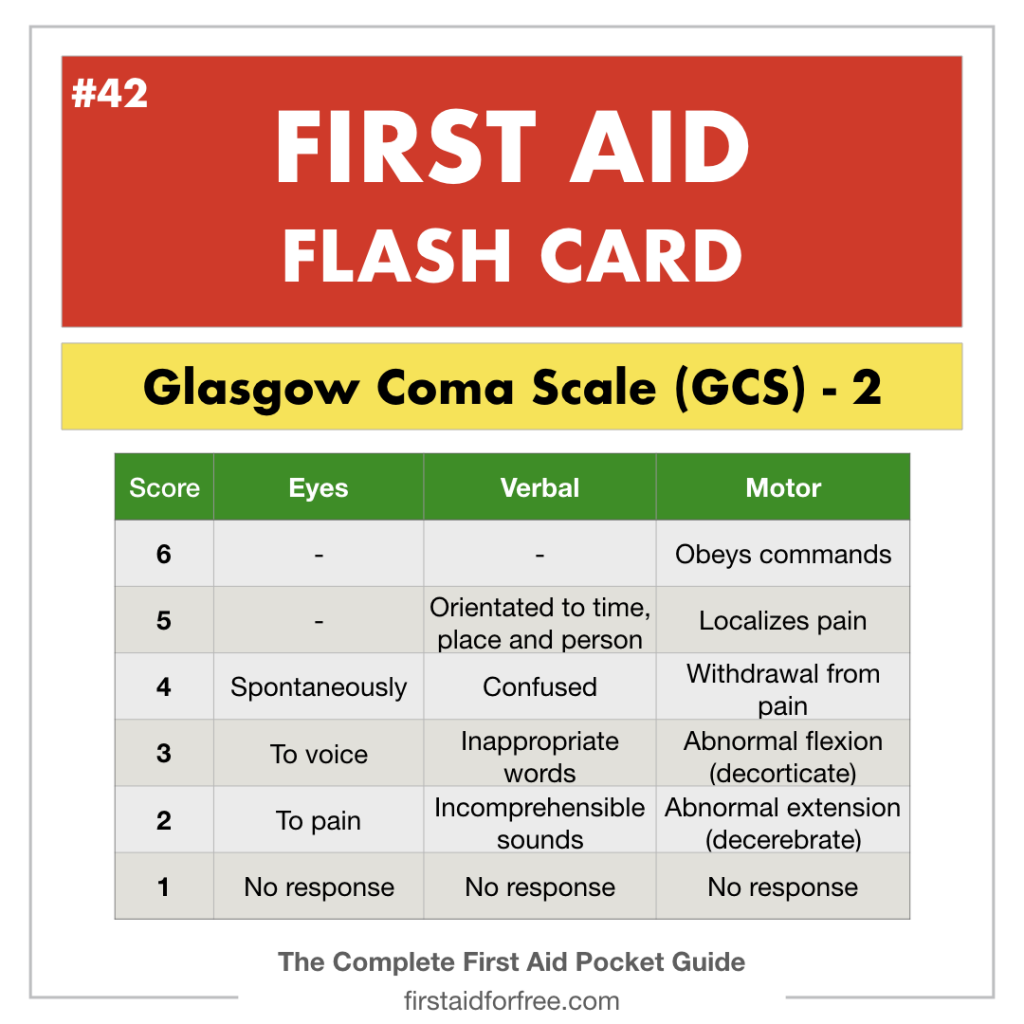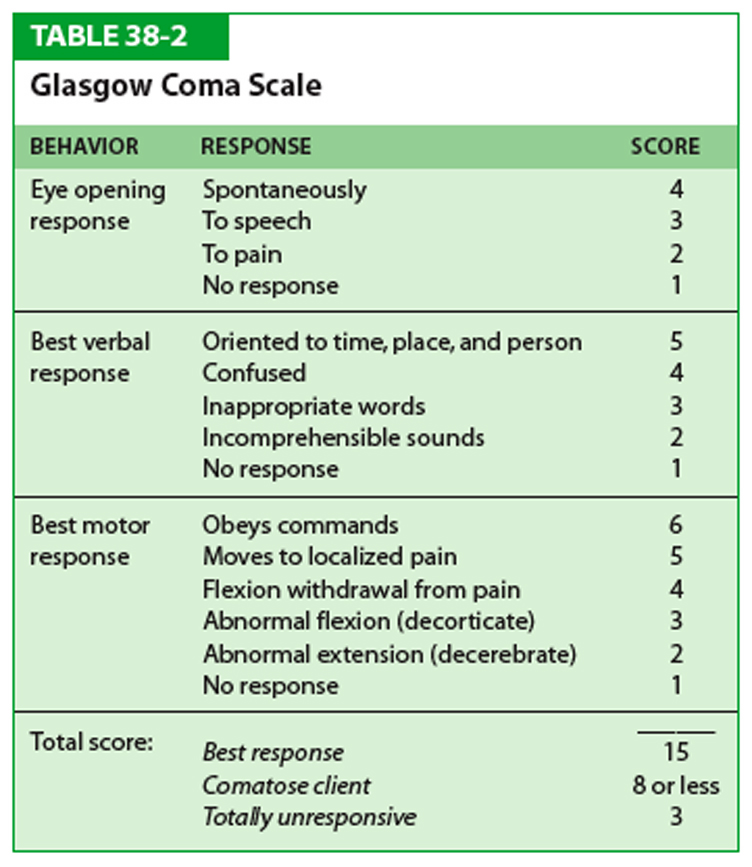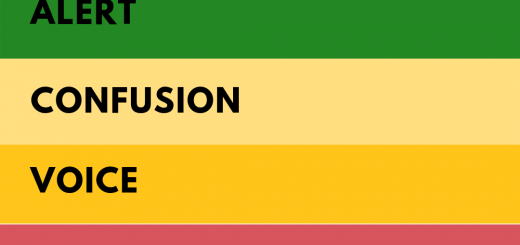The Glasgow Coma Scale (GCS) for first aiders
The Glasgow Coma Scale (commonly shortened to GCS) is a measurement of a patients level of consciousness, ie how awake the patient is.
As the name suggests, the scale was first designed in Glasgow for patients who had suffered a head injury. It is now used across the world by emergency medical staff and first aiders to assess a patients level of consciousness.
The Glasgow Coma Scale contains three measurements: Eyes, Verbal and Motor. Each measurement is assigned a score and the GCS is the total of the three scores combined. The minimum GCS score is 3 (completely unconscious) and the maximum is 15 (fully alert).
The following table lists the individual components of the Glasgow Coma Scale and how the individual measurements are scored.

A GCS of less than 8 is generally considered a serious medical emergency due to problems with the airway. Patients who have a GCS less than 8 are unlikely to be able to protect their airway and are at risk of hypoxia (lack of oxygen).
When recording a Glasgow Coma Scale score you should identify the individual components as well as the overall score. e.g: E4 S4 M6 = GCS 14
It is important to remember that GCS scores can fluctuate minute-by-minute, especially in critically unwell patients.
Issues with the Glasgow Coma Scale
The Glasgow Coma Scale does have problems however. It can be quite difficult to learn and also people can interpret the scoring system in different ways.
In addition, various factors such as alcohol & drugs can ‘mask’ a casualties true level of consciousness, especially in a head injury situation. However despite this, the Glasgow Coma Scale is still widely used by emergency medical services and hospitals across the world.

Glasgow Coma Scale pocket guide
Complete EMS Vertical Badge Card Set – 13 Cards (Office Product)
Remembering all the details of the Glasgow Coma Scale can be challenging, especially when dealing with a stressful situation such as a medical or trauma emergency. We recommend buying an aide memoir to help you remember essential information such as how to calculate a GCS.
These pocket cards are a great way for first aiders, first responders, EMTs and paramedics to access information whilst in the field.
The cards are reasonably priced and available from Amazon.
Glasgow Coma Scale video
The GCS can be a very complicated scale to use. This entertaining video explains the GCS in a slightly different way and may be more memorable than a boring table!
Want to learn more?
Want to learn more about the Glasgow Coma Scale and other first aid tools? Why not sign up to one of our FREE online first aid courses!







Thanks for sharing this important information here with us.
Never heard of the Glasgow Coma Scale, but that is a really great way to determine whether or not a head injury is severe before a CT scan can be performed. Thanks for sharing!
I didn’t know there were different levels to a coma.
It makes complete sense though because it’s all based on how bad or intense the injury was.
cool
nice, especially the dancing part… but moderate injury is 9 to 12 and not 8 to 12, and mild is 13 to 15, not 12 to 15, please amend that… 😉